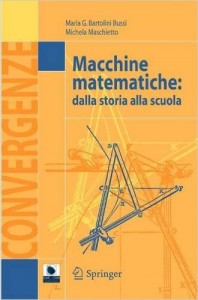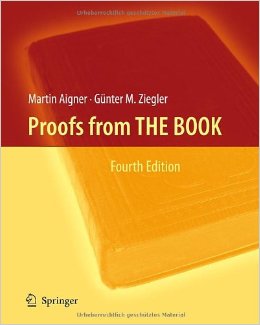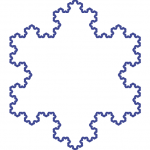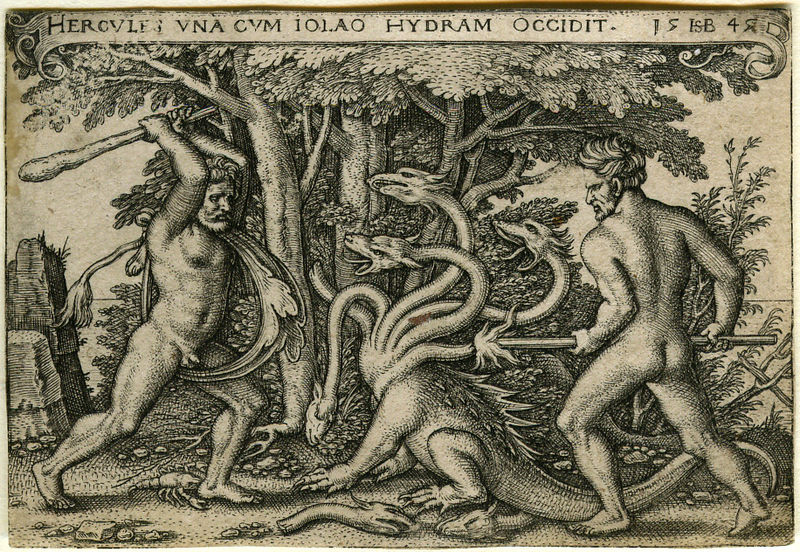 November’s site of the month: Accromath
November’s site of the month: Accromath
This is the site of a French-Canadian journal aimed at a mathematics teacher audience.
Now in its 10th volume, the journal has articles in French that can be read online or download as pdf.
 November’s site of the month: Accromath
November’s site of the month: Accromath
This is the site of a French-Canadian journal aimed at a mathematics teacher audience.
Now in its 10th volume, the journal has articles in French that can be read online or download as pdf.
 October’s site of the month: The Laboratory of Mathematical Instruments
October’s site of the month: The Laboratory of Mathematical Instruments
October’s book of the month: Bartolini Bussi, Maria G., Maschietto, Michela (2006). Macchine Matematiche. Springer
Japanese Translation: Kyokusen no jiten : seishitsu rekishi sakuzuhoÌ, Tankoban Hardcover
A mathematics teacher coming to Modena, Italy, might enjoy a visit to the Laboratory of Mathematical Instruments at the University of Modena and Reggio Emilia (UNIMORE).
The Laboratory is run by Michela Maschietto and Maria G. Bartolini Bussi, in collaboration with the no-profit Association with the same name.
The Laboratory has 2 different sites:
– one in the Building of the Department of Physics, Informatics and Mathematics (via Campi 213/B9),
– one in a central building of UNIMORE (via Camatta 15).
In the former you can see about one hundred of curve drawing devices and instruments for geometrical transformation. In the latter you can see a beautiful exhibition of working models of instruments for perspective drawing — many reconstructed from the Renaissance period.
——————————————————————————————
For further information write to:
Michela Maschietto: michela.maschietto@unimore.it
Mariolina Bartolini Bussi: bartolini@unimore.it
Originating authors are Alberto A. Pintoa (University of Porto, cLIAAD-INESC Porto LA) and Telmo Parreira (University of Minho, cLIAAD-INESC Porto LA).
Have you ever been frustrated by the lack of choices when you go to buy something? Why do producers of the things we buy tend to make their products as similar to each other as possible? If we model how shoppers in a city will choose in which store they will make their purchases, the resulting mathematics leads us to an appreciation of Hotelling’s Law that making products similar to your competitor is actually a rational decision. We are also led into the mathematics of game theory and Nash’s Equilibrium.
Continue reading
 April’s Book of the Month is Proofs From The Book by Martin Aigner and Günter Zeigler.
April’s Book of the Month is Proofs From The Book by Martin Aigner and Günter Zeigler.
(The first edition came out in 1998 — note the new editions)
From the preface to the first edition.
Paul Erdös liked to talk about The Book, in which God maintains the perfect proofs for mathematical theorems, following the dictum of G. H. Hardy that there is no permanent place for ugly mathematics. Erdös also said that you need not believe in God but, as a mathematician, you should believe in The Book. A few years ago, we suggested to him to write up a first (and very modest) approximation to The Book. He was enthusiastic about the idea and, characteristically, went to work immediately, filling page after page with his suggestions. Our book was supposed to appear in March 1998 as a present to Erdös’ 85th birthday. With Paul’s unfortunate death in the summer of 1997, he is not listed as a co-author. Instead this book is dedicated to his memory.
We have no definition or characterization of what constitutes a proof from The Book: all we offer here is the examples that we have selected, hoping that our readers will share our enthusiasm about brilliant ideas, clever insights and wonderful observations.
 Originating author is Christiane Rousseau.
Originating author is Christiane Rousseau.
From its very beginning, Google became “the” search engine. This comes from the supremacy of its ranking algorithm: the PageRank algorithm. Indeed, with the enormous quantity of pages on the World-Wide-Web, many searches end up with thousands or millions of results. If these are not properly ordered, then the search may not be of any help, since no one can explore millions of entries. Continue reading

 Originating author is Christiane Rousseau.
Originating author is Christiane Rousseau.
How do we measure the size of a geometric object? For subsets of the plane we often use perimeter, length, area, diameter, etc. These are not sufficient to describe fractals. The fractal objects are very complex geometric objects, and we must find a way to quantify their complexity. For this purpose the mathematicians have introduced the concept of dimension. Dimension provides a measure of the complexity of a fractal. The notion of dimension is a generalization and formalization of our intuitive notion of dimension when we speak of 1D, 2D or 3D. We will discuss some ways to describe fractal objects by working on two examples: the Sierpinski carpet and the von Koch flake (see figures on the left). Continue reading
 Originating authors are Gabriel Rosenberg and Mark Iwen.
Originating authors are Gabriel Rosenberg and Mark Iwen.
It is a little known fact that two gold medals were awarded for the same pairs figure skating competition in the 2002 Winter Olympics. These two medals were ultimately a result of contentious voting which initially resulted in the clear crowd favorites not winning the gold medal. The outrage over this decision was so great that the International Olympic Committee (IOC) eventually had to award a second gold metal to the second place figure skating pair in order to settle the scandal. As a secondary result, the voting system for deciding which figure skaters deserve which medals was changed (NB: Prior to 2003 judges individually scored participants and used these results to rank the athletes. These ranks (not scores) were then combined to award overall prizes).
Imagine that you are on the IOC in 2003 and have been tasked with developing a better voting system for judging figure skating competitions in the future. What voting system would you choose for ranking figure skaters? How would you make sure that the voting system was fair? Not surprisingly, mathematics can help us answer these questions! Continue reading
 Originating authors are Michèle Artigue, Ferdinando Arzarello and Susanna Epp.
Originating authors are Michèle Artigue, Ferdinando Arzarello and Susanna Epp.
Studying the evolution of a natural phenomenon often leads to studying numerical sequences , especially their long-term behavior and whether they eventually converge. Polynomial, exponential, and logarithmic sequences are frequently encountered in secondary school, but certain other sequences with very simple definitions exhibit much more complex behavior. Examples include the chaotic sequences that arise in the study of dynamical systems (see [1]) and the Syracuse sequence (or ![]() sequence), introduced by Luther Collatz in 1937. The Syracuse sequence has challenged mathematicians for decades. Despite the huge number of values that have been computed, it is currently unknown whether the sequence is infinite or is finite and always ends in
sequence), introduced by Luther Collatz in 1937. The Syracuse sequence has challenged mathematicians for decades. Despite the huge number of values that have been computed, it is currently unknown whether the sequence is infinite or is finite and always ends in ![]() (see [2]).
(see [2]).
 Originating authors are Dirce Uesu Pesco and Humberto José Bortolossi.
Originating authors are Dirce Uesu Pesco and Humberto José Bortolossi.
The images you see on internet pages and the photos you take with your mobile phone are examples of digital images. It is possible to represent this kind of image using matrices. For example, the small image of Felix the Cat (on the left) can be represented by a ![]() matrix whose elements are the numbers
matrix whose elements are the numbers ![]() and
and ![]() . These numbers specify the color of each pixel (a pixel is the smallest graphical element of a matricial image, which can take only one color at a time): the number
. These numbers specify the color of each pixel (a pixel is the smallest graphical element of a matricial image, which can take only one color at a time): the number ![]() indicates black, and the number
indicates black, and the number ![]() indicates white. Digital images using only two colors are called binary images or boolean images.
indicates white. Digital images using only two colors are called binary images or boolean images.
 Originating author is Christiane Rousseau.
Originating author is Christiane Rousseau.
In this vignette, we will show how we start from a small game to discover one of the most powerful theorems of mathematics, namely the Banach fixed point theorem. This theorem has fantastic applications inside and outside mathematics. In Section 3 we will discuss the fascinating application to image compression.
But, let us start with our game and look at the famous lid of a box of The Laughing Cow.